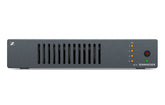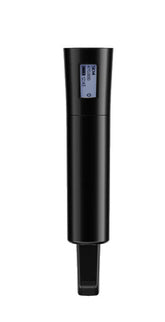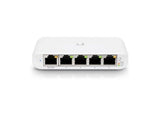The Role of SD-WAN in Retail Networking: Is It Right for You?
Introduction: Modern Retail Needs Smarter Networks
Retail is evolving fast. From mobile POS systems and cloud-based inventory apps to video surveillance and personalized in-store experiences, today’s retailers depend on reliable, high-speed, and secure network connectivity. Yet traditional WAN architectures often fail to meet the needs of multi-site retail operations.
That’s where SD-WAN (Software-Defined Wide Area Networking) comes in.
A 2023 IDC study found that over 45% of multi-location retailers plan to implement SD-WAN in the next two years. Why? Because SD-WAN empowers retailers to simplify operations, improve application performance, strengthen security, and cut costs.
In this post, we’ll explain what SD-WAN is, why it’s transforming retail networking, and how you can determine if it’s the right fit for your store network.
What Is SD-WAN?
SD-WAN (Software-Defined Wide Area Network) is a cloud-first networking solution that uses software to manage connectivity across multiple locations. Unlike traditional WANs that rely heavily on MPLS circuits or fixed broadband, SD-WAN allows you to dynamically route traffic over any combination of WAN links including broadband, LTE, 5G, or MPLS.
Key Features:
-
Centralized cloud-based management
-
Application-aware routing
-
Real-time traffic optimization
-
Encrypted tunnels and integrated security
Why It’s a Game-Changer:
-
Delivers better performance for cloud apps and SaaS tools
-
Prioritizes traffic for critical applications like POS or VoIP
-
Makes adding or managing new store locations faster and easier
For retailers juggling dozens or hundreds of branch locations, SD-WAN brings consistency, control, and cost efficiency to network management.
Benefits & Use Cases for Retailers
1. Enhanced Application Performance
Retail environments depend on applications like:
-
POS systems
-
Inventory management
-
Digital signage
-
Guest Wi-Fi
-
Security cameras
SD-WAN optimizes performance for these apps by prioritizing bandwidth and rerouting traffic in real-time if one connection degrades.
Use Case: A chain of convenience stores uses SD-WAN to ensure uninterrupted POS transactions and smooth customer checkouts, even during peak hours or when one ISP experiences downtime.
2. Simplified Network Management Across Stores
With centralized control, SD-WAN eliminates the need for on-site IT teams to configure or troubleshoot each branch individually.
Use Case: A retail clothing brand manages 200+ stores nationwide with a cloud-based SD-WAN dashboard, allowing IT to push updates, security patches, and performance tweaks remotely.
3. Reduced Network Costs
SD-WAN reduces reliance on expensive MPLS lines and allows retailers to use affordable broadband or 5G as primary or backup connections.
Use Case: A grocery chain replaces costly MPLS circuits with SD-WAN-enabled broadband and LTE failover, saving over $80,000 annually on connectivity.
4. Improved Security and Compliance
Retailers must secure customer data, protect endpoints, and meet standards like PCI-DSS. SD-WAN provides built-in:
-
End-to-end encryption
-
Firewalls
-
Intrusion prevention
-
Traffic segmentation
Use Case: A pharmacy retailer uses SD-WAN to isolate customer POS traffic from public Wi-Fi, ensuring HIPAA and PCI compliance across all locations.
5. Resiliency for Hybrid Work and IoT
From remote access by HQ staff to smart devices on the sales floor, SD-WAN supports a growing range of endpoints and workflows.
Use Case: A home goods retailer leverages SD-WAN to connect IoT devices like smart shelves and temperature sensors, while providing secure VPN access to regional managers.
Challenges & Considerations
Integration With Legacy Systems
SD-WAN may require changes to routers, firewalls, or switches. Migrating legacy hardware can be time-consuming.
Tip: Work with a vendor that supports hybrid SD-WAN deployments, allowing you to gradually transition your infrastructure.
Bandwidth Planning
While SD-WAN allows use of multiple connection types, insufficient or poorly configured links can still create bottlenecks.
Solution: Perform a bandwidth audit and prioritize critical applications using application-aware routing.
Vendor Lock-In or Feature Overlap
Some providers bundle SD-WAN with security, routing, or cloud services that may overlap with existing tools.
Solution: Choose interoperable platforms and open APIs that allow you to integrate with your existing stack.
Initial Setup and Training
Getting started with SD-WAN involves network reconfiguration and possible retraining of IT teams.
Solution: Invest in managed SD-WAN services if your internal resources are limited.
How to Implement SD-WAN in Retail Environments
Step 1: Assess Current Network Infrastructure
-
Number of branch locations
-
Current ISPs and failover plans
-
Critical applications and bandwidth needs
-
Existing routers, firewalls, and switches
Step 2: Define Business Goals and Security Needs
-
Do you want cost savings, performance, uptime, or all of the above?
-
What regulatory standards must your network comply with (e.g., PCI, HIPAA)?
Step 3: Choose the Right SD-WAN Provider
Look for:
-
Cloud-native management platform
-
Support for multi-ISP configurations
-
Built-in security (NGFW, segmentation, encryption)
-
Scalability for new store locations
-
Integration with existing AV and surveillance systems
Step 4: Pilot in a Few Locations
Start small by deploying SD-WAN in 2–5 stores. Test:
-
Application performance (POS, Wi-Fi, video)
-
Failover response
-
Centralized management interface
-
Integration with surveillance and AV systems
Step 5: Roll Out to Entire Network
-
Use zero-touch provisioning for fast deployment
-
Monitor performance and uptime from the central dashboard
-
Regularly audit for compliance and security vulnerabilities
FAQs
Can SD-WAN replace MPLS entirely?
Yes, in most cases. SD-WAN can use affordable broadband or LTE as primary or backup, but some retailers may choose to retain MPLS in high-traffic hubs for added redundancy.
Does SD-WAN support AV and surveillance traffic?
Yes. SD-WAN is ideal for real-time video feeds, digital signage, and IP camera networks, allowing bandwidth prioritization and traffic segmentation.
How secure is SD-WAN for handling POS transactions?
With built-in firewalls, encryption, and application isolation, SD-WAN is highly secure for POS systems and compliant with industry standards like PCI-DSS.
Conclusion: Should Retailers Embrace SD-WAN?
In a retail environment where digital signage, POS uptime, surveillance, and cloud services are mission-critical, SD-WAN offers a smarter, faster, and more secure way to connect your stores. It reduces complexity, boosts performance, and provides flexibility as your retail network grows.
While there are setup and integration challenges to consider, the benefits of SD-WAN—especially for multi-location and tech-savvy retailers—make it a future-proof investment.
Looking to modernize your retail networking setup?
Explore our full range of networking infrastructure, AV systems, and IP surveillance solutions at SportsGeekUSA.











